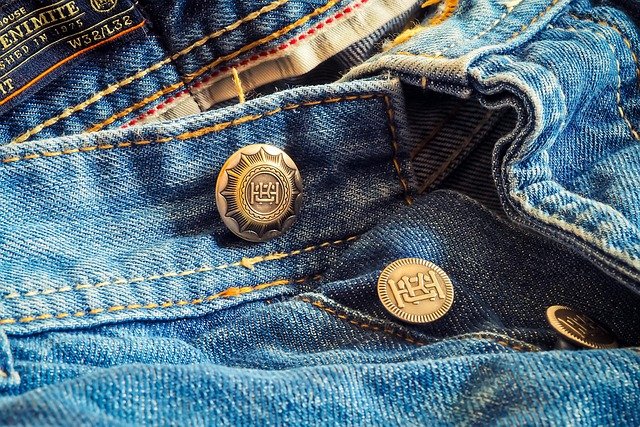Levi's Men's Jeans: A Practical Guide to Fits, Fabrics, Care, and Buying
Levi’s men’s denim comes in a wide range of fits, fabrics, and details, which can make choosing a pair feel complicated. This guide breaks down classic silhouettes, materials, sizing, and care so you can identify what suits your build and style, keep your jeans lasting longer, and shop with confidence from authentic sources.

Finding the right pair of Levi’s men’s jeans starts with understanding how fit, fabric, and construction work together. Small choices like rise height, leg shape, stretch percentage, and weight of denim can change comfort and appearance. With a few practical checks and some basic care habits, you can refine your options, extend the life of your denim, and avoid common buying mistakes.
Classic Fits and Modern Cuts
Levi’s fit language balances heritage with updated shapes. Classic fits include straight legs and regular rises that work for most builds, offering a timeless line over boots or sneakers. Modern cuts add taper and slimmer thighs for a cleaner profile without looking tight. Key terms: straight means the leg opening mirrors the knee width; slim narrows through the thigh and calf; taper narrows from knee to opening; relaxed offers extra room in seat and thigh. Choose rise to match how you wear your jeans on the waist or hips, and match leg shape to your footwear.
Fabrics, Construction, and Sustainability
Traditional denim is cotton twill woven with indigo-dyed warp yarns and undyed weft. You will find rigid denim with zero stretch for a structured drape, and stretch blends using elastane or similar fibers for mobility. Midweight fabrics around 12 to 13 oz are versatile; heavier weights feel sturdy and age with pronounced fades. Construction details matter: chain-stitched hems resist unraveling, bartacks strengthen pocket stress points, and copper rivets reinforce corners. Many product lines now include cotton sourced with water-saving methods and recycled content, reflecting broader efforts toward lower-impact manufacturing. Look for clear fabric labels and care tags that specify fiber mix and origin.
Choosing Size, Fit, and Alterations
Focus on the waistband, seat, and thigh first; these areas define comfort. The waistband should sit flat without gapping or digging, and the seat should contour without pull lines beneath the pockets. Thigh ease is essential for mobility; pinch test about a finger’s width of fabric for slim fits and more for relaxed. Inseam can be tailored, so prioritize waist and rise before length. Hemming with a chain stitch preserves an original look; many local services in your area can replicate this detail. If you are between sizes, stretch denim can accommodate a half size of give, while rigid denim relaxes slightly with wear but does not expand dramatically. Always try with the footwear you expect to wear most.
Care, Repair, and Authentic Purchasing Tips
Wash jeans infrequently to maintain color and fabric strength. When needed, turn inside out, use cold water, and mild detergent; avoid bleach. Air dry to limit shrinkage and preserve elastane recovery; if using a dryer, choose low heat and remove while slightly damp. For repairs, patch early: darning a small blowout or reinforcing pocket bags prevents larger failures. Many brands and community tailors offer denim repair services that can extend the life of your jeans. To buy authentic, examine the red tab, two-horse patch, arcuate stitching on back pockets, and rivet markings; inconsistencies, low-quality labels, or off-pattern stitching can indicate counterfeits. Purchase from official stores, reputable multi-brand retailers, or verified marketplaces with clear return policies.
Iconic Styles: 501, 511, 505 and More
Levi’s naming helps you match fit to preference; here is a quick comparison of well-known models.
| Product/Service Name | Provider | Key Features |
|---|---|---|
| 501 Original | Levi Strauss and Co. | Button fly, straight leg, mid rise, non stretch or low stretch denim |
| 505 Regular | Levi Strauss and Co. | Zip fly, straight leg, mid rise, roomier thigh |
| 511 Slim | Levi Strauss and Co. | Zip fly, slim leg, low to mid rise, stretch options |
| 512 Slim Taper | Levi Strauss and Co. | Slim seat and thigh, tapered leg opening, stretch |
| 541 Athletic Taper | Levi Strauss and Co. | Roomier seat and thigh, tapered leg, stretch |
Use the 501 if you want a classic straight silhouette and the look of rigid denim; opt for 505 when you prefer a straight leg with a zipper fly. Choose 511 for a trim profile that pairs easily with sneakers or boots, 512 if you want a sharper taper at the ankle, and 541 if you have an athletic build needing space in the seat and thigh without a wide opening.
Conclusion Good denim fits your life and lasts when chosen thoughtfully. Start with the rise and leg shape that match your style, select a fabric weight and stretch level that meets your comfort needs, confirm sizing in the waist and thigh, and plan simple care and repairs to maximize longevity. By understanding the details behind iconic styles and materials, you can make informed decisions and build a dependable rotation that wears well over time.




